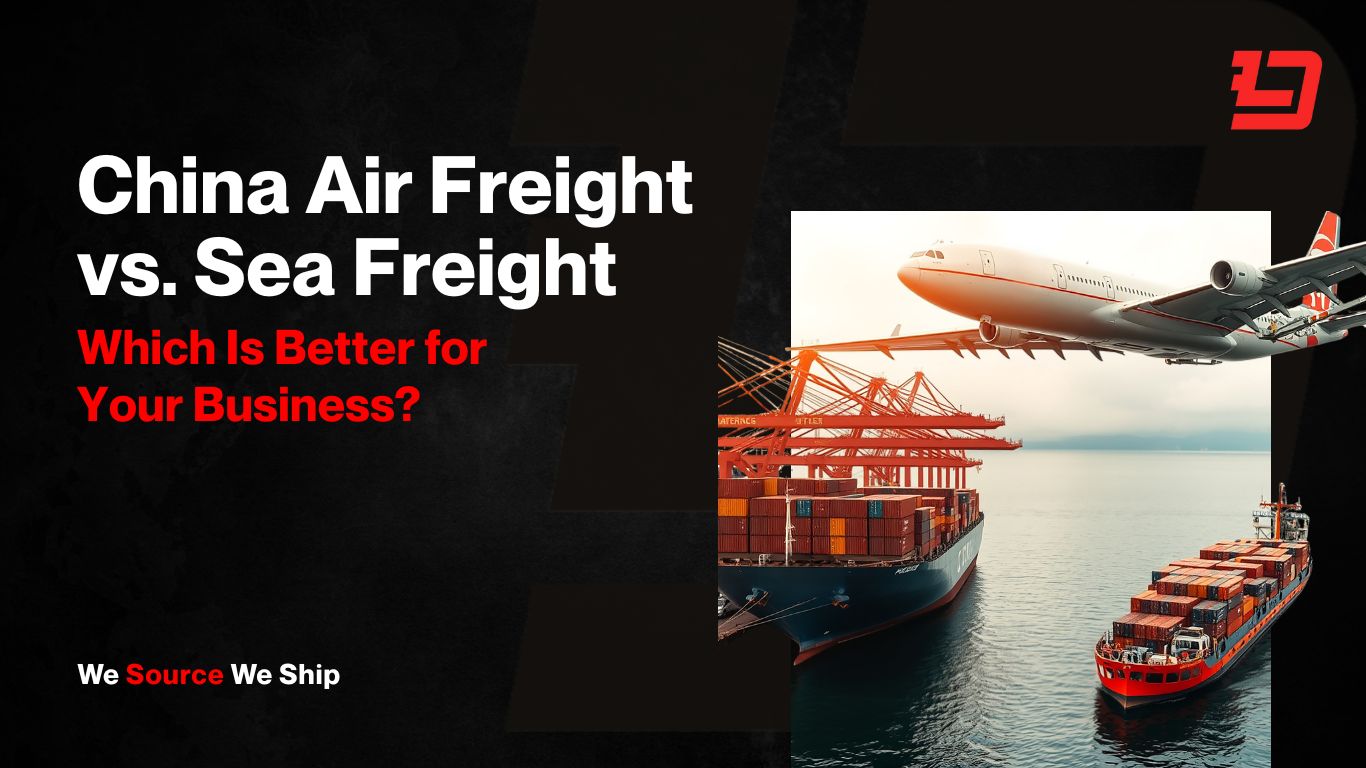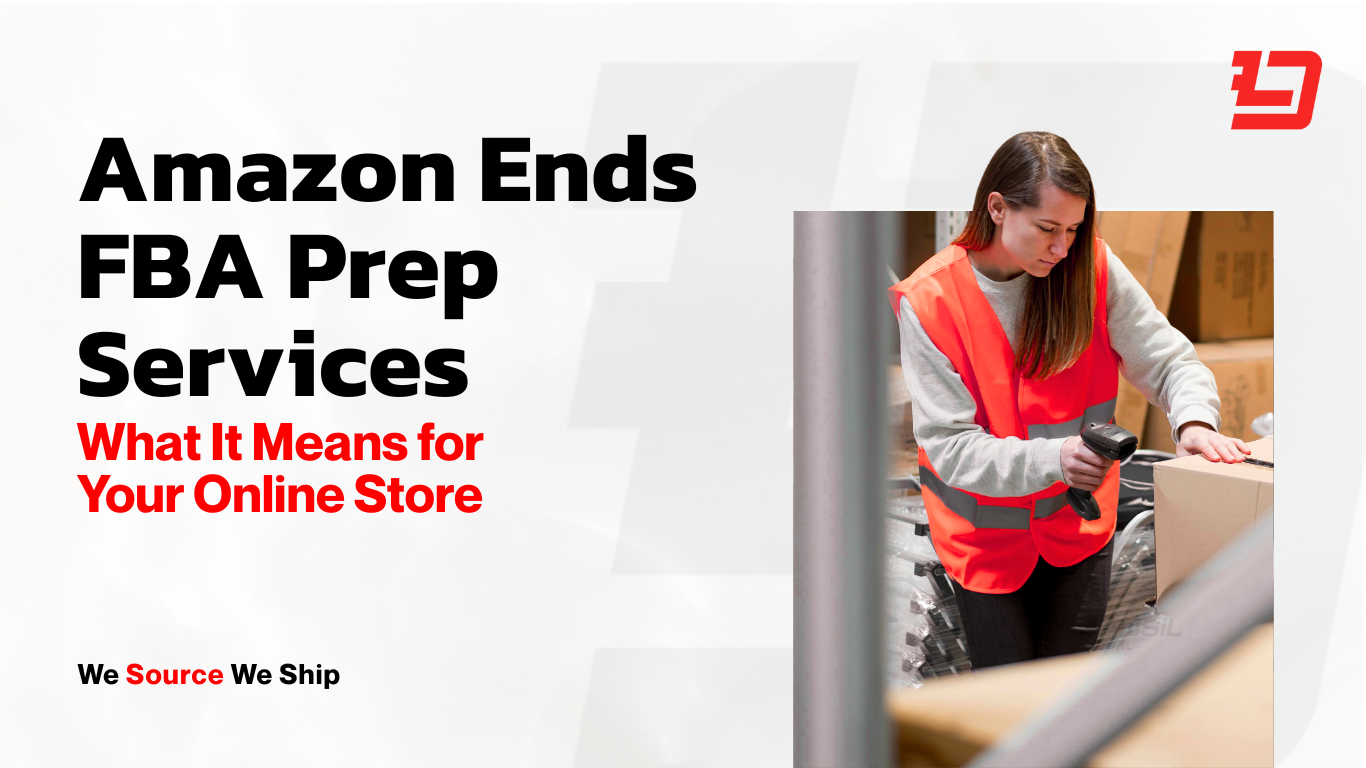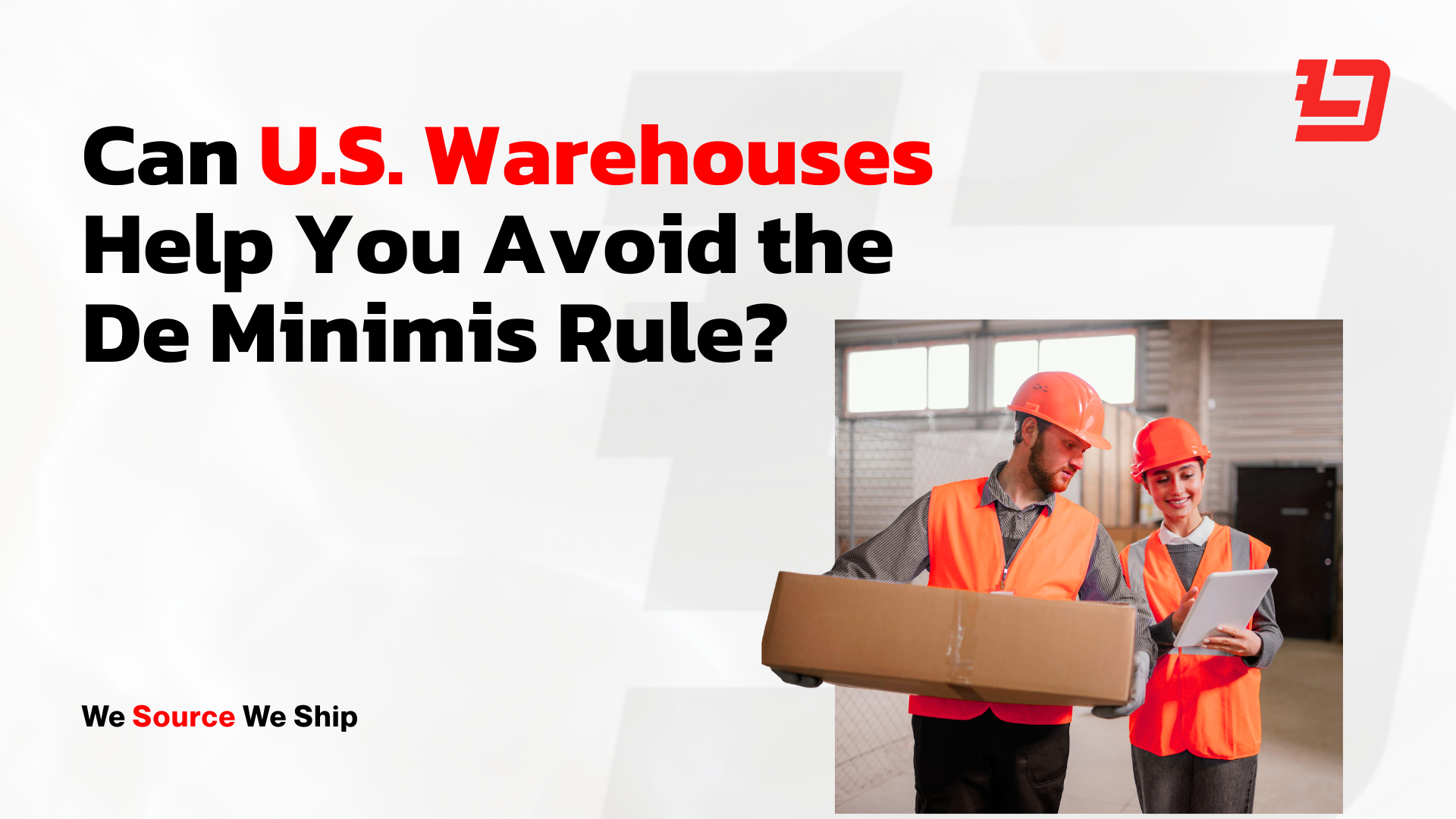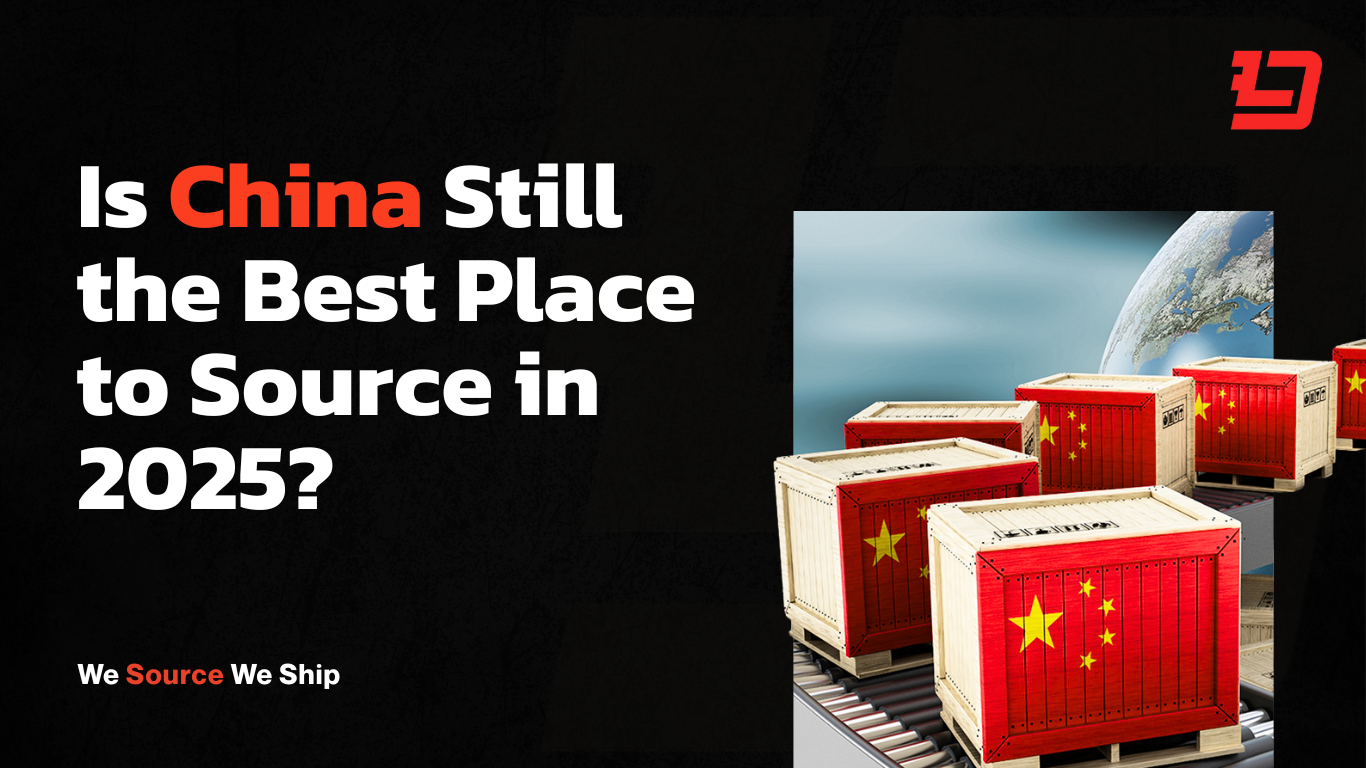Selecting between China air freight and sea freight is a financial and operational decision. Current market data places Northeast Asia to North America air cargo at about 4.7–4.8 USD per kg. On the ocean side, Drewry’s World Container Index is around 2,044 USD per 40-ft container. Transit time differentiates the modes: standard air typically delivers in 5–10 days, while China–USA ocean services take about 3–9 weeks depending on lane and service level.
This guide shows when to pick air, when to pick sea, and how a China freight forwarder can help you mix both for speed and margin.
Quick answer: when to use each mode
Choose China air freight if:
Items are small, high value, and time sensitive. Think earbuds, premium accessories, or cosmetics gift sets. Your gross margin per kg can support about 4.5–5.0 USD per kg for China–USA air. You also need stock on shelves within 5–10 days.
Choose China sea freight if:
Items are bulky or low value per kg, such as textiles, small furniture, pet gear, or fitness equipment. You can plan 4–9 weeks ahead and keep safety stock. You want the lowest landed cost per unit.
Cost comparison you can run in 60 seconds
Step 1: Calculate value density
Value density = landed cost per kg. If a product weighs 0.5 kg and the landed cost is 10 USD, value density is 20 USD per kg.
Step 2: Plug current rate anchors
Air: plan with 4.5–5.0 USD per kg for China to North America, then confirm with a live quote. Ocean FCL: divide the 40-ft price by payload. Example: 2,044 USD per 40-ft carrying 10,000 kg ≈ 0.20 USD per kg. Rates change with season and policy, so verify weekly (Drewry).
Step 3: Quick break-even rule
If air freight per kg is under 10–15% of retail value per kg, air can make sense. If it is over 20–25%, switch to ocean and tighten planning.
Worked example
Landed cost 8 USD, net weight 0.4 kg.
Air at 4.8 USD/kg adds 1.92 USD. If retail is 30 USD, freight share is 6.4%. Air is viable.
Ocean at ~0.20 USD/kg adds 0.08 USD. Cheaper, but only if your lead time allows.
Speed and reliability
Air freight
Door to door is usually 5–10 days for standard air. 1–3 days can happen for express parcels. It still takes time because of export clearance, ground handling, flight availability, and destination customs (Freightos).
Ocean freight
Door to door is roughly 3–6 weeks to the US West Coast and 5–9 weeks to the East Coast, depending on service, ports, and inland moves. Reliability is better than peak disruption years, but still uneven. Add buffer around sail dates and delivery targets (Freightos).
If a one-week slip could sink your launch, use air or split the shipment. If you can reorder 4–8 weeks ahead, ocean protects your margin.
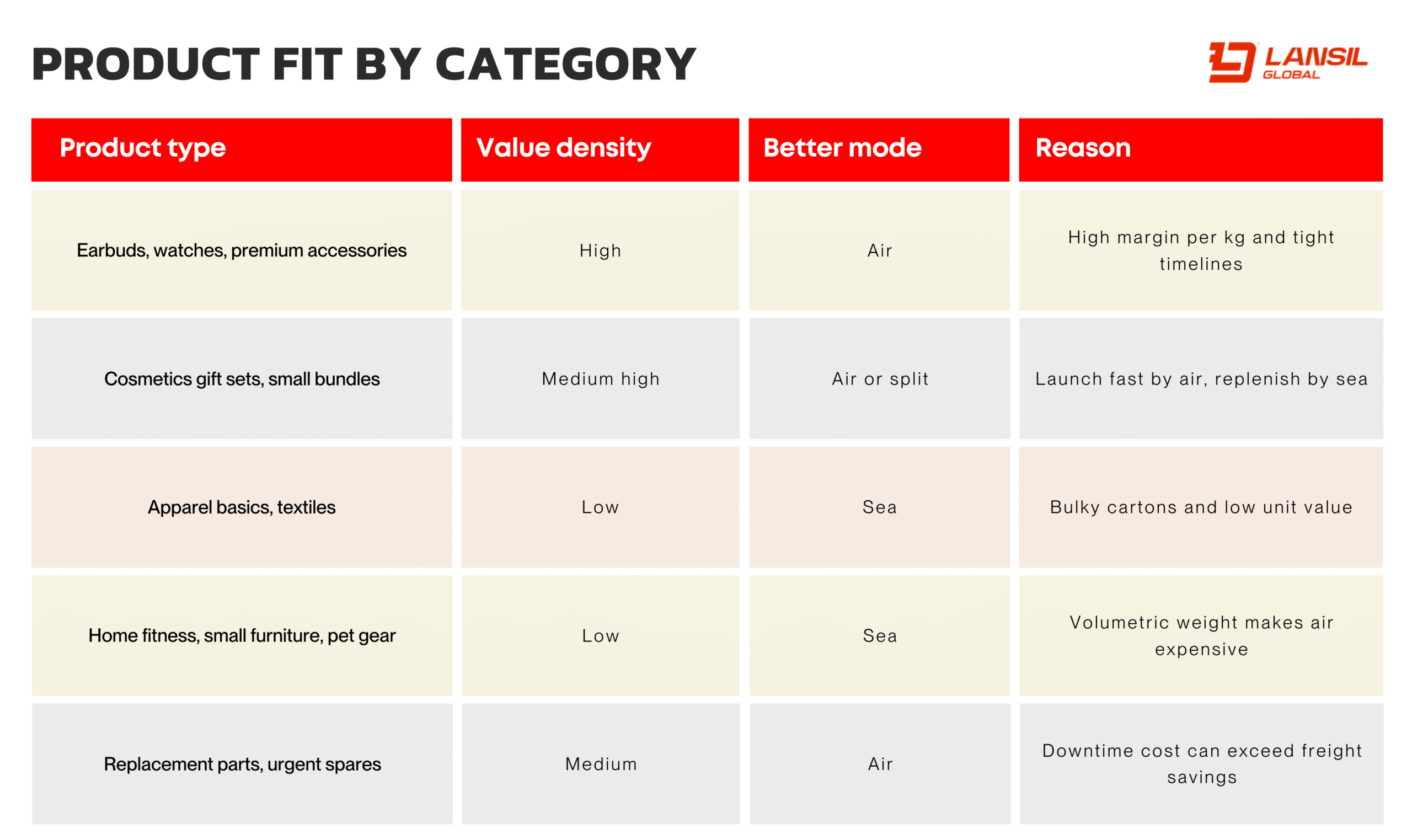
How does sea freight from China work?
You pick FCL or LCL. FCL gives you a full container and the best rate per kg once you fill most of the box. LCL is shared space, good for smaller purchase orders, with a bit more handling time. Your forwarder books the sailing and aligns export documents: commercial invoice, packing list, HS codes, and any certificates. Cargo is palletized for the voyage and cleared for export. The container loads the vessel, sails, arrives, clears import, pays duties where needed, and moves to your 3PL or FBA. Total time is the sum of origin handling, the ocean leg, port dwell, customs, and final mile. FCL is usually faster and more predictable than LCL (Freightos).
How does air freight from China work?
Air pricing is driven by chargeable weight, which is the higher of actual kg or volumetric weight (length × width × height in cm ÷ 6000). This is why carton design matters. Choose the right service: express for small parcels and speed, consolidated air for multi-carton shipments at better rates, or deferred air to save cost if you can wait a little longer. Your forwarder books space, prepares export clearance, and handles screening. After the flight, cargo breaks down, clears import, and moves to your 3PL. Most commercial air shipments deliver door to door in about a week when paperwork is clean and space is available (Freightos).
How will a China freight forwarding company help my business?
A good China forwarder is a control tower. They align supplier cargo-ready dates with carrier space, choose between air and ocean at the SKU level, and prevent small mistakes from becoming big delays. They manage HS codes, valuation, and origin labeling, and they flag battery, magnet, or liquid issues before screening. Most of all, they turn quotes into a plan: a live comparison of air and sea with clear assumptions, a split-shipment option when it makes sense, and a schedule your team can work with.
That is how Lansil Global operates. Our China team manages the factory handoff, books space, files export, and keeps you updated at each step. When freight lands, our US warehouses in Nevada and Pennsylvania handle receiving, FBA prep if needed, and fast domestic shipping in 2–4 days to most customers. You get fewer handoffs, cleaner landed-cost math, and a steadier delivery promise. If you run Shopify or Amazon and launch often, we map a rolling plan so base stock moves by ocean while urgent lines fly.
Need a freight partner that won’t leave you guessing? Let Lansil Global manage your logistics so you can focus on scaling. Contact us now to explore freight forwarding and fulfillment solutions that work.


